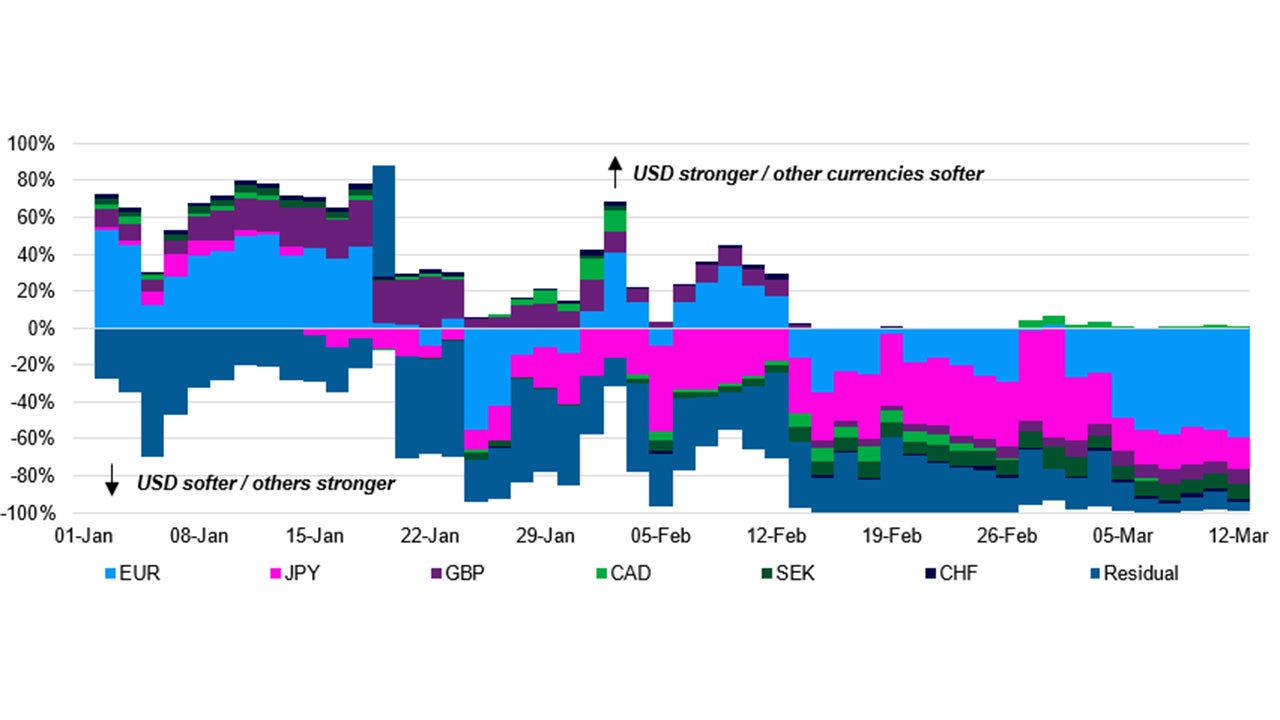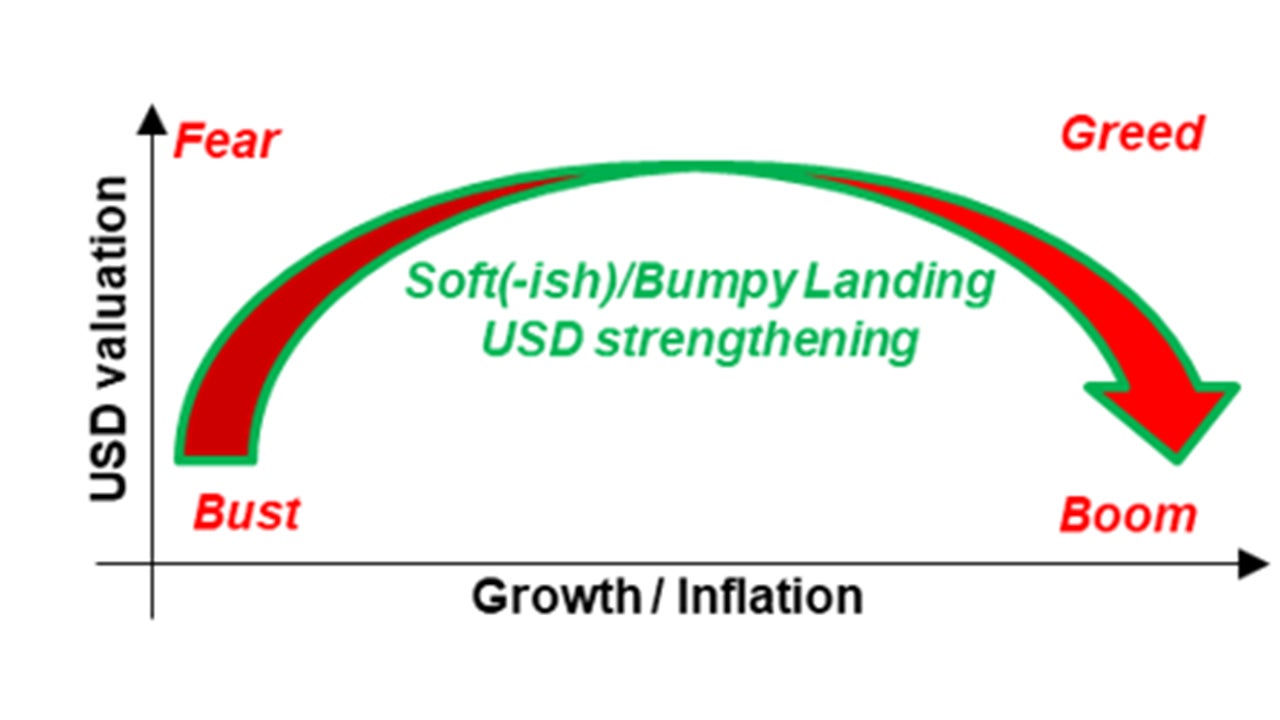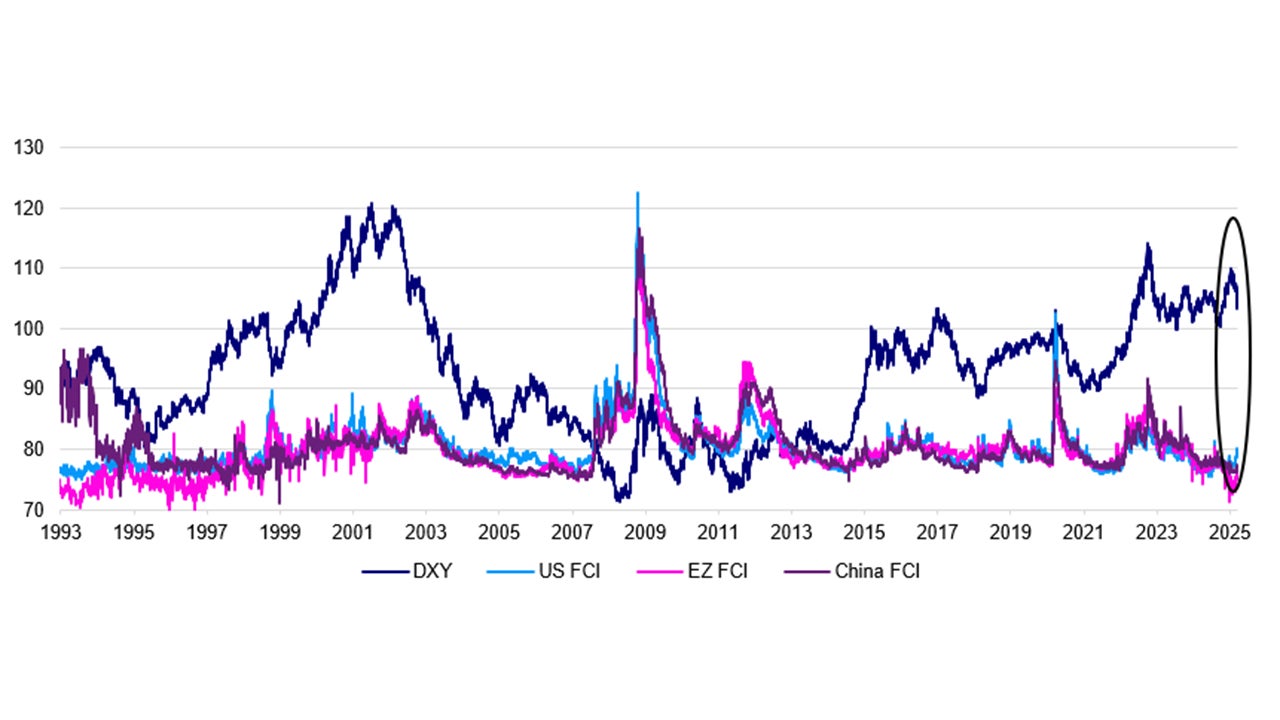USD Outlook: Why we expect further weakening

Summary
We expect the USD to continue weakening due to structural shifts in the US economy: the new White House’s longer-term strategy is to pivot the US economy from services and consumption, to one of manufacturing and investment.
The steps needed to take could turn the “Dollar Smile” into a “Dollar Frown.” Thus, a weaker USD going forward could mean continued European and EM/Asian asset outperformance.
At the beginning of 2025, the USD index (DXY) experienced a broad-based rally fueled by pre-inauguration “Trump Trade” momentum.
Initially, major currencies such as the EUR, GBP and CAD weakened against the USD as Trump’s tariffs targeted even America’s closest Western allies.
But in the second month, the USD has weakened across all major currencies, as Trump’s disruptive policies - such as federal budget cuts, layoffs and rapid shifts in tariffs - have hit business and consumer confidence. Investor fear for growth seems stronger than high levels of inflation due to tariff policies.

Source: The Dollar Smile, Stephen Li Jen & Fatih Yilmaz, Morgan Stanley, 2001.
The chart above shows the “Dollar Smile,” an idea that the USD rises both during greed (e.g., when US growth is strong and the Fed is tightening monetary policy) and fear (e.g. when overall demand for safety assets such as the USD and US Treasuries outweigh the Fed’s easing). Seen through this lens, it makes sense that the current environment has led to the USD weakening.

Note: Chart shows the year-to-date contributions by each constituent currency to changes in DXY, a nominal US dollar index, adjusted by index weights, rebased to 1 January 2025 = 100. Higher (lower) is a stronger (softer) dollar, and the opposite for DXY constituent currencies. GFC = global financial crisis. Sources: Macrobond and Invesco, daily data as at 13 March 2025.
As America’s military unconditional support for NATO allies appears to wobble, Eurozone governments have stepped up to announce meaningful fiscal support to counter losses of US export demand and boost defense support. This has strengthened the EUR, GBP and SEK in particular.
Could all of this be playing to the new White House’s hand? Trump has consistently argued for a weaker USD, the Fed to cut rates and for NATO partners to meaningfully size-up their defense spending. It may not be far-fetched to think that Trump may actively be using uncertainty to weaken the USD and cause a mild recession in order to induce Fed easing.
And this takes me to my next point, that the Dollar Smile could be turning to a Dollar Frown.

Note: DXY – broad nominal dollar index against other major liquid currencies. Higher is a stronger dollar and tighter financial conditions. Source: The Dollar Smile, Stephen Li Jen & Fatih Yilmaz, Morgan Stanley, 2001.
A Dollar Frown is when the USD weakens during slowdowns and upswings. Such a shift may help to rebalance US activity to manufacturing and investment and away from consumption and services. Indeed, USD, stocks and bonds are down just as financial conditions ease in EZ and China.
What would it take for a Dollar Frown to structurally replace the Smile?
- fiscal cuts in the US that raise national savings;
- tariffs that pull production onshore;
- higher goods prices that discourage imports;
- rising domestic demand in other big economies;
- rising public spending in other major economies;
- increase in investment and consumption in other major economies to offset cutbacks in US imports and military commitments.
It’s no coincidence that many of the policies that have been recently announced from the White House have aided the transition to a Dollar Frown.

Note: Bloomberg Financial Conditions Index (FCI) values in reverse (lower numbers reflect tighter financial conditions). Source: Bloomberg, ICE, Macrobond, Invesco. Daily data as at 14 March 2025.
Conclusion
We believe the White House is pushing for a softer USD and some decline in the greenback’s global role to help rebalance the US from services and consumption to manufacturing and investment, with smaller trade deficits.
We expect these challenges to keep driving Europe and Asia to outperform the US.
Investment risks
The value of investments and any income will fluctuate (this may partly be the result of exchange rate fluctuations) and investors may not get back the full amount invested.





